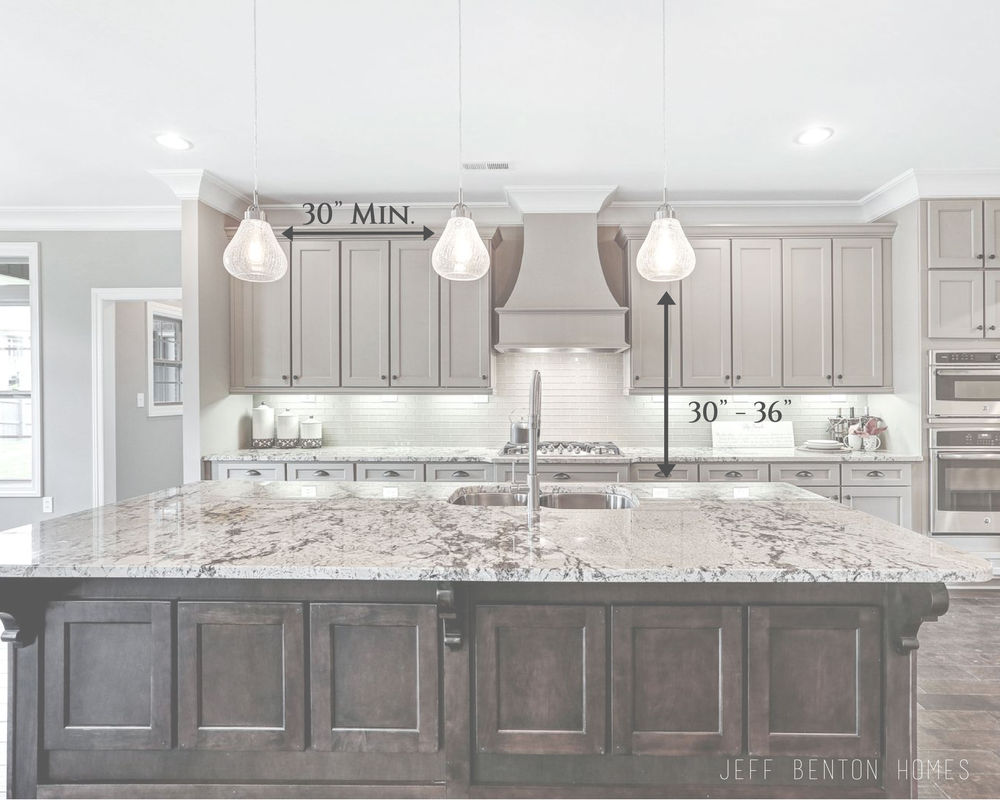Design Tips for Lighting
Lighting is a beautiful way to add ambiance and design to your home, but determining the right fixture for the right space can sometimes be a challenge. It’s a question that many homeowners have, so here are some great guidelines that will help you through the process.
Over a Dining Table

When you’re looking for a chandelier or light fixture for over a table, you’ll want to look for one that is somewhere between 1/2 to 3/4 of the width of the table for maximum impact. This same principal applies to round tables as well. Except, you’ll want to make sure your scale is 1/2 to 3/4 the diameter of the table. Allow at least 30″ between the bottom of your ceiling fixture and the top of your dining table. This will ensure you have plenty of space between the two and it won’t be a distraction for family or guests.
Linear Fixtures Over an Island or Bar

When it comes to linear fixtures, proportion is the most important factor. Ideally, you want your fixture to measure NO MORE than 2/3 the length of the surface underneath it. If you have an extra long surface or space to cover, consider using two linear fixtures so that light will fill the entire space. For linear fixtures, allow 30″ – 36″ between the bottom of the ceiling fixture and top of the surface area.
Pendant Fixtures Over an Island or Bar

Single pendants or cage-style fixtures look best when they are used together to create a more dramatic style. Depending on the scale of the overall fixture and the size of the surface underneath, you’ll want to make sure you coordinate the right number of fixtures. For example, if the scale of the pendant is small, you might want to use three pendants hanging together instead of just two. On the same note, if the pendants are larger, two may be the perfect blend. Allow at least 30″ – 36″ between the bottom of the pendants and the top of the surface. When installing multiple pendants, make sure the widest parts of the fixtures are spaced a minimum of 30″ apart.
Great Rooms and High Ceilings

For rooms with ceilings higher than 10′, pay close attention to the overall height of the ceiling fixture. For instance, ceiling fixtures with a taller overall height will fit the scale and height of the room better.
Entryways and Foyers

If your foyer is two-story or has high ceilings, you’ll want to use the rule of thumb for great rooms and high ceilings. Remember, scale is important! For average height foyers, consider the tallest person that might walk through your space and allow a minimum of 7′ from the bottom of the fixture to the floor. Regardless of the height of the entryway, make sure your fixtures are not close to any nearby doors.

